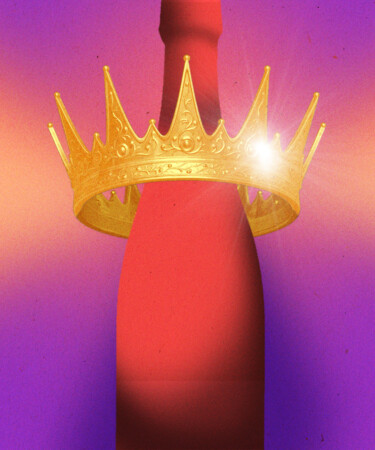Wine labels: Once you think you’ve learned everything you need to know, more confusing language pops up. This is especially true when it comes to those from Champagne, a region that tends to play by its own set of rules. One term that you might come across when shopping for your next French bottle of bubbly is “tête de cuvée.”
While the word “cuvée” is somewhat common in the wine world, its meaning can often be ambiguous. Those who took intro to French in the eighth grade might recognize the word “tête” as meaning “head” — but how do these words translate in terms of wine? VinePair spoke with Rémi Vervier, the managing director and oenologist of Champagne’s Champagne Palmer, to explain.
For the most part, this is all about context: For many wine scholars or winemakers, tête de cuvée refers to the first juices that result from a grape’s initial pressing. “It’s the noblest juice used to craft the finest wines. In fact, at Champagne Palmer, this is not just reserved for the high-end wines, but used throughout the entire range of wines,” Vervier says.
The word “cuvée” can also be used to describe a specific blend or special bottling from a winemaker within their lineup of wines. But in Champagne, Vervier notes, winemakers just refer to the first-pressed juice as cuvée, while tête de cuvée has become generally synonymous with prestige wines themselves.
So what makes tête de cuvée wines so special? Vervier explains that since these wines are meant to “represent the ultimate expression of a Champagne brand,” the region’s winemakers take a very serious, meticulous approach to their production. This includes sourcing carefully selected grapes from the best possible vineyards, extreme attention to detail in the cellar, and keeping the wines for longer aging periods. So when you see tête de cuvée in reference to a Champagne, it means it is the cream of the crop or crowning glory for that producer.
These wines are also typically made in only the best vintages. Popular examples include Veuve Clicquot’s La Grande Dame, Taittinger’s Comtes de Champagne, or Ruinart’s Dom Ruinart. According to Vervier, these renowned wines are “characterized by their exceptional quality, finesse, and depth of flavors and are typically produced in limited quantities, making them more exclusive and sought after by Champagne enthusiasts and collectors.”
Champagne Palmer’s tête de cuvée label is the Amazone de Palmer, the most prestigious wine in its lineup. Champagne Palmer is known for its use of the solera system (a method common in sherry production) in its winemaking, and this wine is meant to demonstrate its expertise in the art of blending and aging.
“By allowing time to do its work in our chalk cellars over a period of more than 10 years, we let the terroirs of the Montagne de Reims slowly reveal their infinite richness and extraordinary finesse,” Vervier explains.
So, if you come across a wine boasting the title of tête de cuvée, don’t be intimidated by the label — you are in for a treat.
